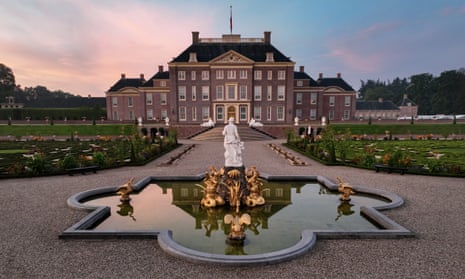At first glance, William of Orange’s palace seems just as it was in the 17th century – a handsome Dutch baroque building set along three sides of a courtyard seemingly pockmarked with rain puddles.
But underneath the courtyard, an injection of engineering expertise costing €171m (£151m) has created an extraordinary modern museum, opening next week.
Paleis Het Loo, in central Netherlands, was built as a hunting lodge for the man who became William III, the Protestant king of England, Ireland and Scotland from 1689, and is remembered by Ulster’s Orange Order as “King Billy” whose “glorious revolution” seized the throne from the Catholic king, James II.
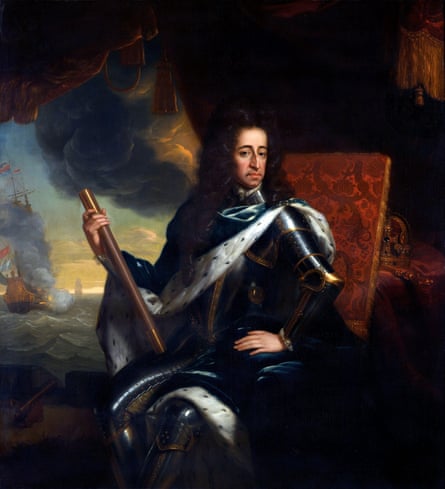
Less well remembered is that he was a Dutchman who was appointed ruler or stadtholder of provinces including Holland. Some historians say he used the palace for a kind of diplomacy that changed Europe.
In a five-year renovation, Het Loo has been lifted several millimetres, the ground of its courtyard dug and drained 10 metres deep, and a new concrete basin poured in to provide another 5,000 m2 of exhibition space. The puddles above are actually skylights, giving glimpses of the historic building in an ever-changing light – just as the museum describes changing views of Dutch royals.
“It’s like hiding an elephant!” said Michel van Maarseveen, the managing director, standing in the grand foyer. “Techniques were used on a scale that we haven’t seen before here in the Netherlands. It’s a beautiful underground extension but also a renovation of the palace … to be a museum for everyone.”
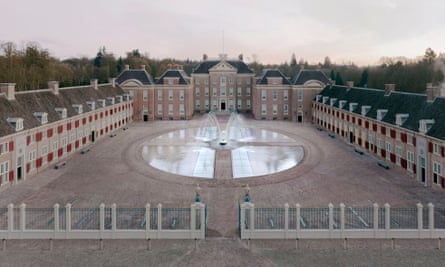
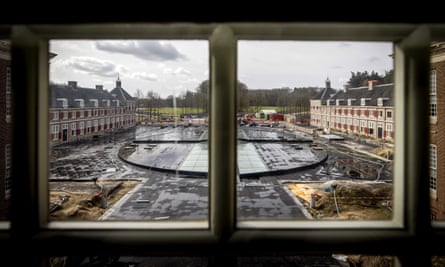
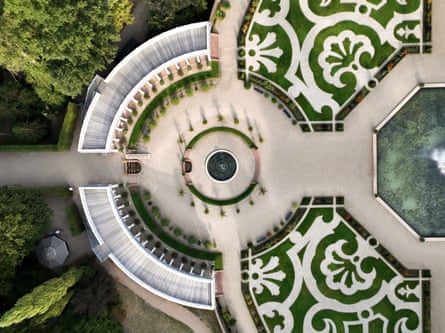
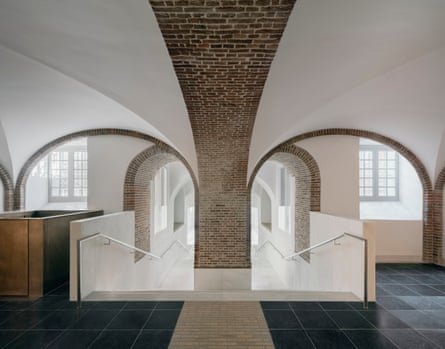
The extension, designed by Kaan Architecten and finished with decorative walnut and Blanco Macael white stone, echoes the symmetry and style of the Dutch palace – itself built as a riposte to Versailles, built for William III’s French rival Louis XIV.
“Almost in the middle of nowhere he built this huge palace here, on the Veluwe, because it was a very good hunting ground, and also the lowest area,” said Van Maarseveen. “This enabled him to build huge waterworks in the garden. The palace was regarded as a sort of paradise. After he and Mary became king and queen of England, it was enlarged.”
The location, and indeed William III, have a forgotten significance in European history, according to the historian Luc Panhuysen, who has studied his struggles against the war-mongering Catholic French “sun king” Louis XIV.

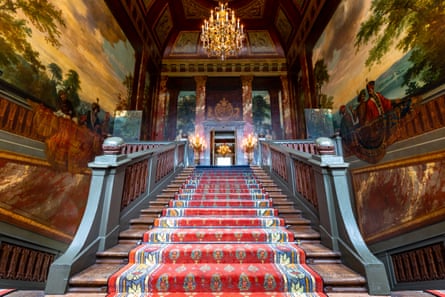

“In English historiography, William is too Dutch, but for a Dutch public, he is too English,” said Panhuysen. “But William was the last glimmer of gold in the Dutch golden age: he broke the paralysis between the English crown and parliament with the Dutch polder model, and saved the Dutch republic with the help of the English Treasury.
“Het Loo was in the woods, far from The Hague, where William could retreat with his confidants, and – over a drink – secretly make international politics. William built coalitions: in the words of Henry Kissinger, William III was the architect of the continental balance of power. For this, Het Loo was important, to give shape to politics, far from the eyes of spies.”
The museum hopes to welcome 500,000 visitors a year to see its blend of historical features and modern exhibitions on royalty. The restoration includes an orangerie with 200 citrus trees, classic gardens, William III’s best fountain (which apparently spouts higher and smells better than Versailles’) and a recreation of the 17th-century apartments where William and his wife, Queen Mary II of England, stayed.
A temporary exhibition, Masterpiece, features a multimedia art display and the story of the renovation, including surprise finds, such as an elaborate sewer. “We think it was a way to get water to the courtyard fountain,” said the programme manager, Marlies van Ravenswaaij-Mencke. “It had all kinds of beautiful roses, fleur-de-lis, monograms for William and Mary. The closer you were to the palace, the prettier the decoration. It was, after all, the drain of the king!”
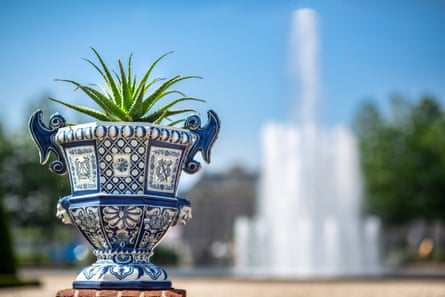

A new permanent display on Dutch royals through the years includes flattering depictions, such as an Andy Warhol portrait of Queen Beatrix of the Netherlands, as well as controversy: the current King Willem-Alexander’s temporary closure of the nearby royal estate grounds for a half-day hunt each year, for instance.
Meanwhile, in the old rooms above, anachronistic hunting relics, including labelled antlers and an elephant trunk lamp, lead to Mary II’s much-loved marmalade kitchen and the bedroom built for her while she was minding the English throne. “She would never come back though,” said the curator, Kristin Duysters. “At 32, she died of smallpox.”
But the palace hopes to preserve her legacy – and the story of the Oranges. “The idea of the monarchy is something that binds the country,” said Van Maarseveen. “But we invite visitors to make up their own minds.”
